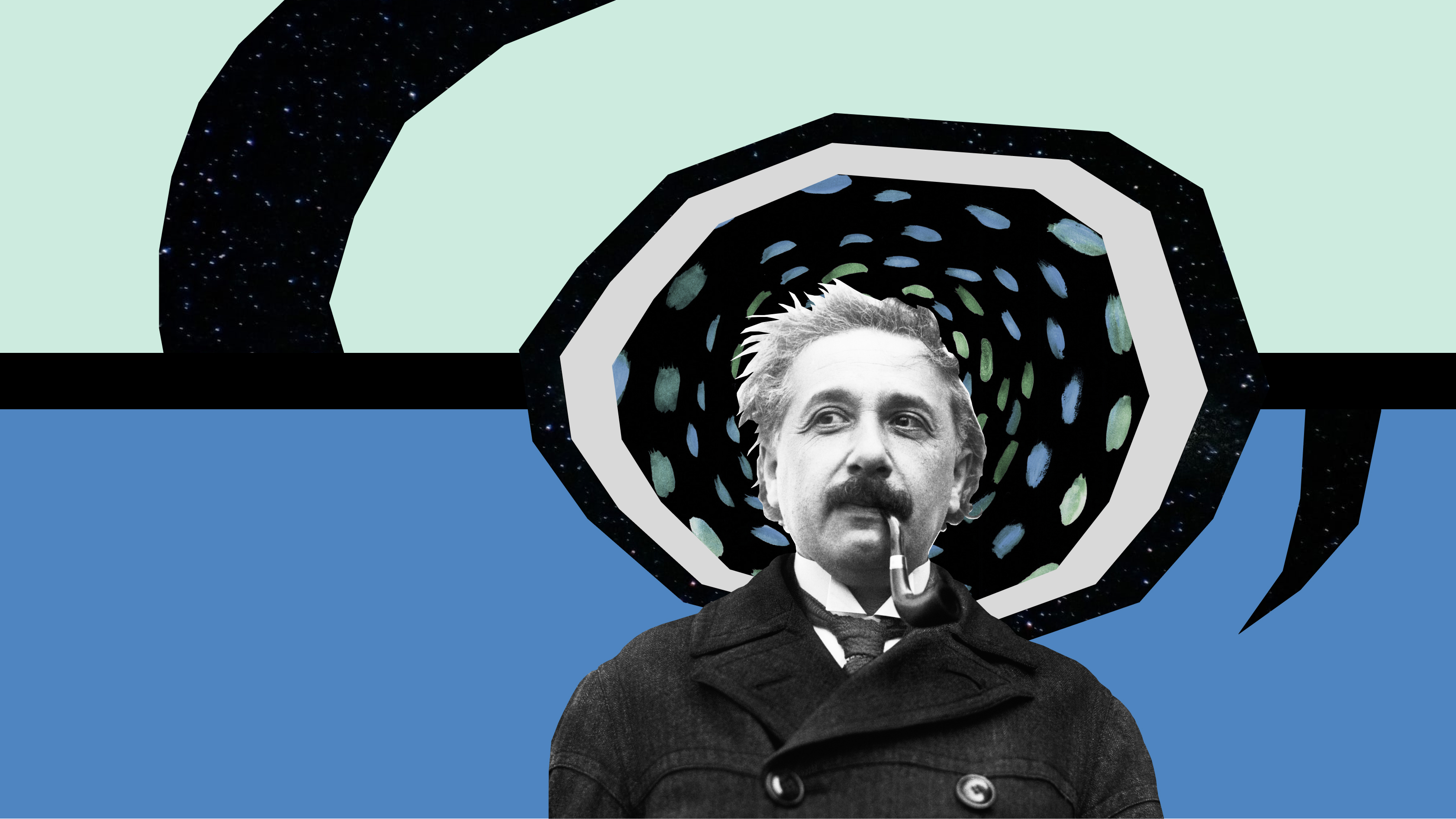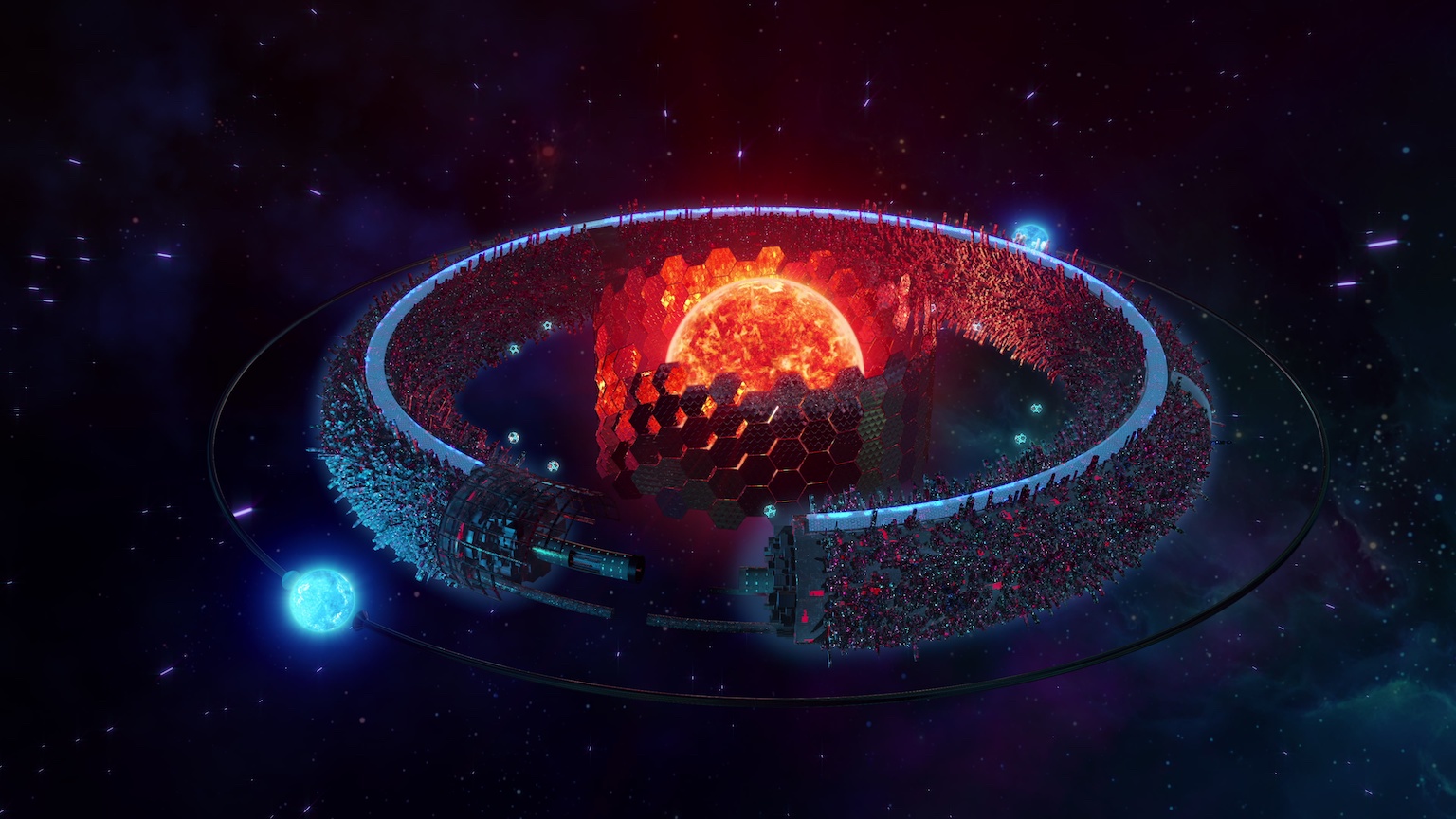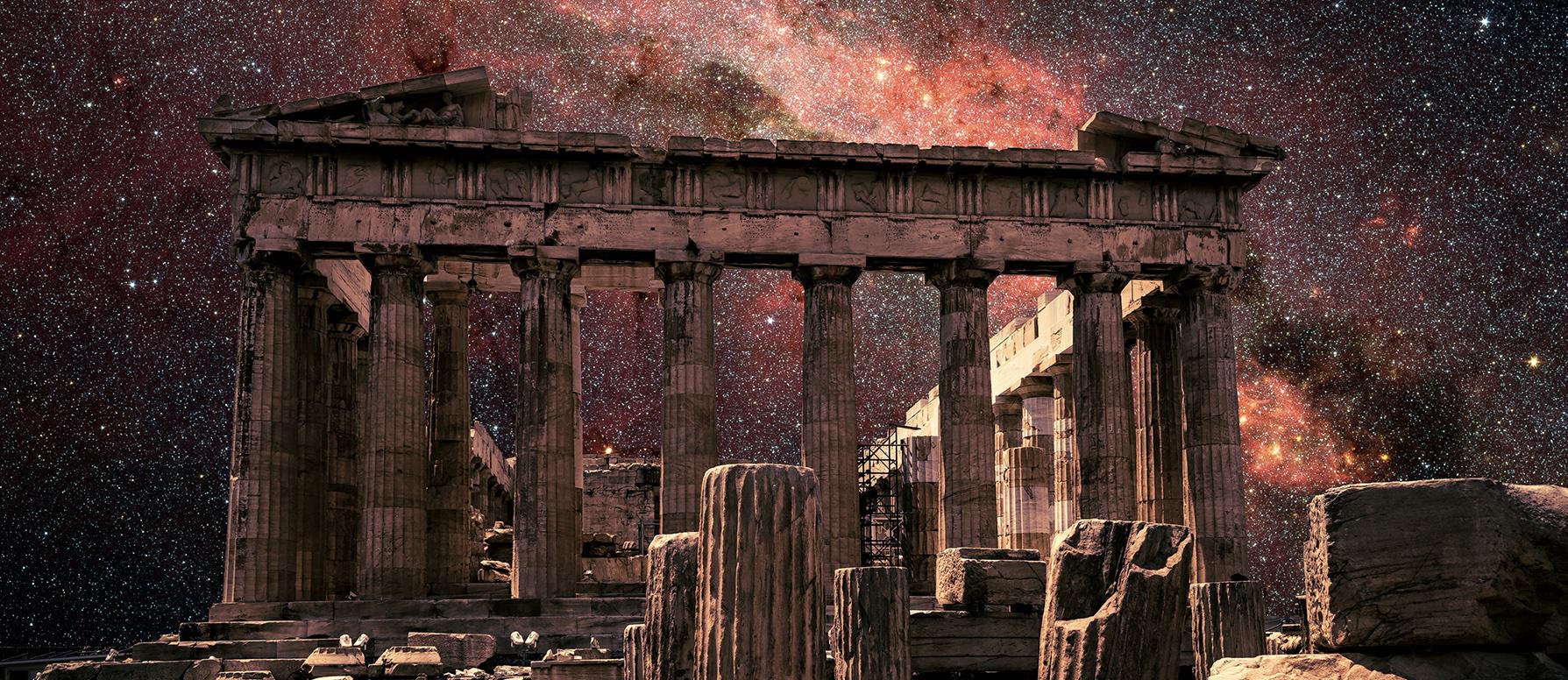How imaginary universes advanced the field of cosmology
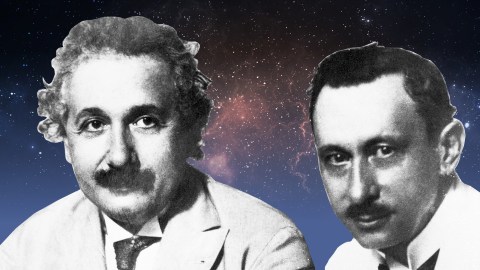
- Armed with Albert Einstein’s powerful new equations and no data, physicists in the 1920s invented all sorts of universes.
- Which Universe would emerge from the conjecture? One that forever expands, or one that expands or contracts?
- Not even Einstein could have known how tricky this story would become.
Say you have a powerful theory, one capable of modeling the Universe. The theory’s mathematics are tough but learnable, and after a year or so of study you are ready to create your model. However, you know very little about the Universe. It is only 1917, and large-telescope astronomy is in its infancy. What do you do? You take the equations seriously and play an informed guessing game. This is what theoretical physicists are good at. The equations, broadly speaking, have the following structure:
GEOMETRY of SPACETIME = MATTER/ENERGY.
The left-hand side tells you how curved or flat the geometry of spacetime is. What determines this curvature is what you put into the right-hand side: the matter and energy that fill up space. Matter bends space, and bent space tells matter where to go. This, in a nutshell, is what Einstein accomplished with his general theory of relativity. (I am writing this on his birthday, March 14, so happy birthday Einstein! To celebrate, I am including an autographed photo he took with my step-granduncle, Isidor Kohn, in Rio de Janeiro when he visited South America in 1925.)
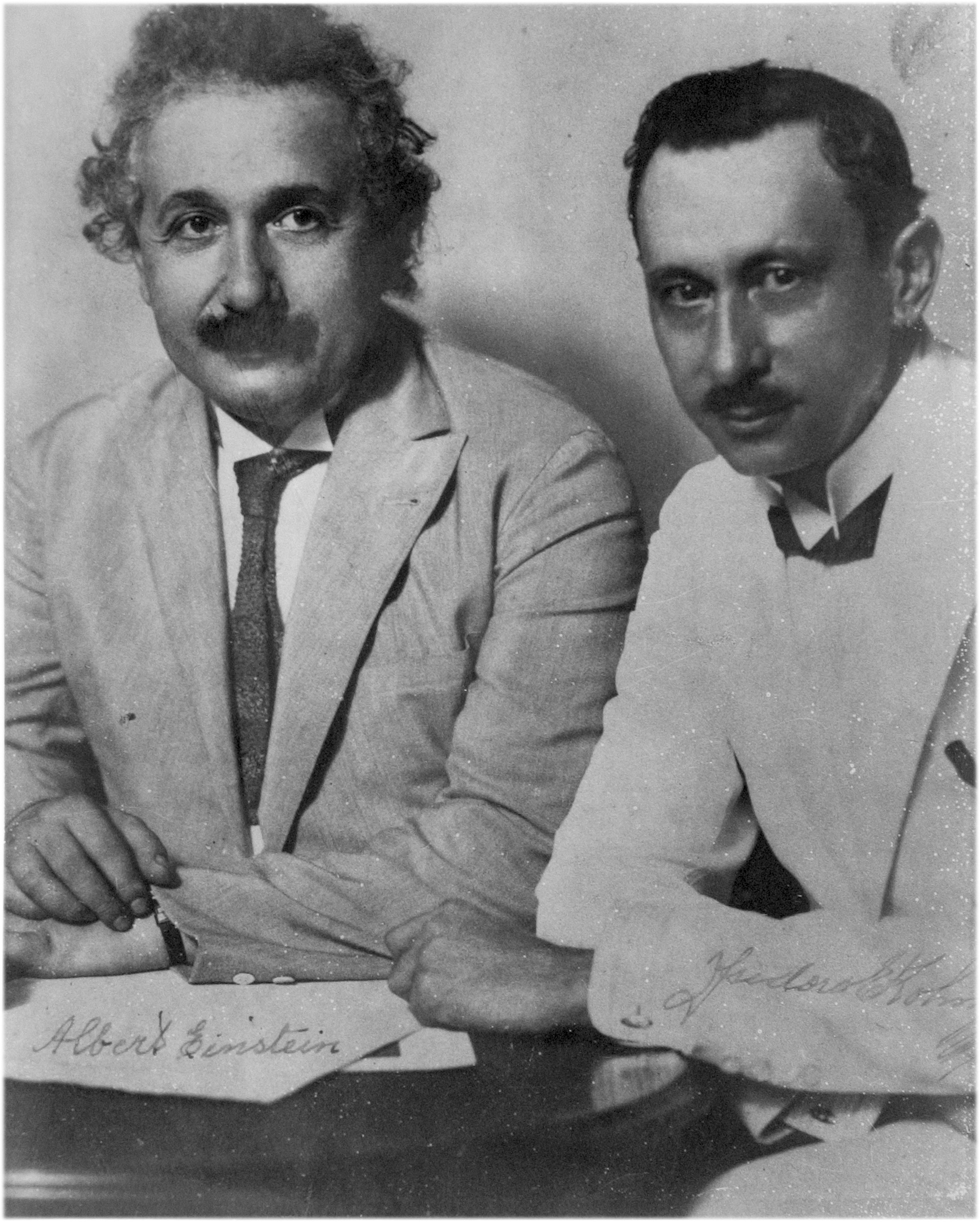
The first crude models of the Universe
Last week, we saw how Einstein used his equations to propose the first model of modern cosmology, his static spherical cosmos, and how he was forced to add an extra term to the equations above — the cosmological constant — in order to make his model stable against collapse. Einstein’s bold move attracted attention, and soon other physicists were proposing their own cosmic models, all of them playing with the right-hand side of the equation.
First was the Dutch Willem de Sitter. Also working in 1917, de Sitter’s cosmological solution was quite bizarre. He showed that apart from Einstein’s static solution, with matter and a cosmological constant, it was possible to find a solution with no matter and a cosmological constant. A Universe with no matter in it was clearly an approximation to the real thing, as de Sitter knew very well. But then, so was Einstein’s Universe, which had matter, but no motion. Both models were crude representations of the Universe. Reality, the authors hoped, lay somewhere in the midst.
De Sitter’s model had a very curious property. Any two points in it moved away from each other with a velocity proportional to the distance between them. Points at a distance 2d moved away from each other twice as fast as points at a distance d. De Sitter’s Universe was empty, yet it had motion. The cosmic repulsion fueled by the cosmological constant stretched this Universe apart.
Our cosmic aquarium
Since De Sitter’s Universe was empty, no observer could perceive its expansion. But in the early 1920s, de Sitter’s work, along with that of others such as astronomer Arthur Eddington, uncovered some of the physical properties of this curious, empty Universe. First, if a few grains of dust were sprinkled into de Sitter’s Universe, they would, like the geometry itself, scatter away from each other at velocities that increased linearly with distance. Geometry would drag them along.
If the velocities increased with distance, some grains would finally end up so far away from each other that they would be receding at velocities approaching the speed of light. Thus, each grain would have a horizon — a boundary beyond which the rest of the Universe is invisible. As Eddington put it, the region beyond “is altogether shut off from us by this barrier of time.” The concept of a cosmological horizon is essential in modern cosmology. It turns out to be the correct description of the Universe we live in. We cannot see beyond our cosmological horizon, which we now know has a radius of 46.5 billion light-years. This is our cosmic aquarium. And since no point in the Universe is central — it grows in all directions at once — other observers from other points in the Universe would have their own cosmic aquaria.
Much like those receding grains, cosmic expansion predicts that galaxies recede from each other. Galaxies emit light, and motion would distort this light. Known as the Doppler effect, if a source of light (a galaxy) is moving away from an observer (us), its light will be stretched to longer wavelengths — that is, it is redshifted. (The same occurs if the observer is moving away from the light source.) If the source is approaching, the light is squeezed to shorter wavelengths, or blueshifted. So if astronomers could measure the light from distant galaxies, physicists would know whether the Universe is expanding or not. This happened in 1929, when Edwin Hubble measured the redshift of distant galaxies.
Learning the Universe could evolve
While these properties of de Sitter’s solution were being explored, Alexander Alexandrovich Friedmann, a meteorologist turned cosmologist in Saint Petersburg, Russia, chose to follow a different road. Inspired by Einstein’s speculations, Friedmann searched for other possible cosmologies. He hoped for something less restrictive than Einstein’s, or something less empty than de Sitter’s. He knew that Einstein had included the cosmological constant to keep his model of the Universe static. But why must it be so?
Perhaps inspired by the ever-changing weather that had occupied him for so long, Friedmann brought change to the Universe as a whole. Cannot a homogeneous and isotropic Universe — one that is the same in all points and directions — have a time-dependent geometry? Friedmann realized that if matter moves, so does the Universe. If the average distribution of matter changes in an uniform way, the Universe does as well.
In 1922, Friedmann presented his remarkable results in a paper titled “On the Curvature of Space.” He showed that with or without a cosmological constant, there are solutions to Einstein’s equations that show a time-evolving universe. More than that, Friedmann’s universes exhibit several possible types of behavior. These depend on the amount of matter filling space as well as whether or not the cosmological constant is present, and if so, how dominant it is.
The hidden cosmic reality
Friedmann distinguished two main types of cosmological solutions: expanding and oscillating. Expanding solutions result in universes where the distances between two points are always increasing, as in de Sitter’s solution where the Universe expands forever. However, the presence of matter slows down the expansion, and the dynamics become more complex.
Depending on how much matter there is and on how its contribution compares to that of the cosmological constant, it is possible for the expansion to be reversed and for the Universe to begin contracting, with galaxies moving closer and closer. In the far future, such a Universe would collapse onto itself into what we call a Big Crunch. Friedmann conjectured that indeed the Universe could alternate cycles of expansion and contraction. Sadly, Friedmann died four years before Hubble discovered cosmic expansion in 1929. He must have guessed that the Universe we live in was hiding among his conjectured universes. But neither he nor de Sitter — nor Einstein for that matter — could have known how tricky this story would become.
